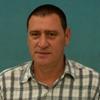Optimizing tilapia biofloc technology systems, part 1





Hi Neil
The only way to maximize throughput production relative to maximum carrying capacity is via the management of a single tank system as a multi-cohort sequential stock management system. This we call the Production: Capacity Ratio (P:C ratio). Apart from reduced CAPEX per unit fish production, the benefits filter down to energy costs for aeration, carbon dioxide stripping and horizontal water movement where power costs are basically halved when compared to a batch production system.
As far as water velocities are concerned there are two aspects that require hydraulic calculations 1) the frictional drag forces of the moving water mass which occurs at the wetted surface area (walls and floor) and 2) the frictional drag forces which occur through the screened compartments. The sum of which is called the system hydraulic gradient against which horizontal water movement needs to be balanced to achieve the design water velocity.
Screen selection, number of screens, % open area are all important affecting the final hydraulic gradient. An offset bottom bar raised three inches from the tank floor and the use of a round bar or cable to achieve complete closure of the screen are the tricks of the trade preventing solids collecting at the floor-bottom bar of the screens.
At velocities of 25-30cm/sec, the movement of heavier solids (dead material, fibrous material) the heavier material drifts on the tank floor at velocities around 15-20% slower than the water column velocities - movement is still achieved. Industrial aquaculture involves a significant amount of engineering design, hydraulics, fluid mechanics, thermodynamics, heat transfer etc. The objective being to produce fish sustainably at the lowest possible cost capitalizing on the benefits of scale economies. At 1130m above sea level we opted to run at 4.5mg/L while the added cost to take dO2 levels to 5mg/L was not great but not essential - calls for added floor diffusers. The combination of paddlewheels and floor diffusers greatly improved the driving gradient in R-ended tank systems increasing oxygen transfer efficiencies under field conditions. Our next project using sea-water BFT for O. mossambicus will, in addition, carry a nano-bubble aeration system to pick dO2 levels up into the 75-85% saturation range. Hope the above is satisfactory for now.
Best, Ray.
Hi Sanu
Last comment. It is often erroneously believed that ALL solids require to be kept in suspension in BFT systems raising tilapias. Our BFT design is selective allowing heavier solids (10-20min settlement time in an Imhoff Cone) to drift on the tank floor which enabled their easy removal from the tank system once a day. While floc was less dense at required 30-35min to achieve a terminal reading using an Imhoff Cone. The objective in BFT is NOT to lose the valuable floc but rather to enable the removal of heavier solids which includes fibrous material and has little more to add in terms of benefits in a BFT system. Proper BFT system design would require careful selection and matching tank hydrodynamics with aeration system selection such that floc is continuously suspended while the heavier unwanted material remains easily removable without impacting on floc volumes. We were able to routinely achieve FCR's of 1:1 on a 20% protein diet under large scale conditions (766m^3 rearing volume) BFT tanks using the system architecture set-up for Chambo Fisheries which applied the above design philosophy.
Hi Sanu
Further to my comments above.
It would appear that moderate training actually reorganizes metabolism so as to spare the muscle [against muscle loss] in many teleost's including tilapias (Belal, 2015) with the result that protein growth is promoted over lipid growth in fish that are both fed and continually swum (Christiansen et al., 1989; Lauff and Wood, 1997). The Belal (2015) study indicated reduced body lipid proximate analysis at velocities of 25-35cm/sec. which supports the below hypothesis. In view of a great deal of convincing literature that net protein accretion rates, protein conversion efficiency from the diet, and overall growth rates are all improved if fish are continually swimming (Houlihan and Laurent, 1987; Christiansen et al., 1989; Davison, 1989, 1997), it seems likely that the exogenous fraction of nitrogen excretion will be lower if fish swim aerobically while feeding; that is, amino acids from the free pool will be funneled preferentially toward protein synthesis, rather than toward deamination and oxidation. Because feeding seems to preferentially elevate the concentrations of essential amino acids in the blood plasma (Brown and Cameron, 1991; Espe et al., 1993), whereas swimming preferentially elevates nonessential amino acids (Barton et al., 1995), it may be that the combination is most effective in stimulating protein synthesis. Interestingly, the Specific Dynamic Action (SDA, a measure of protein accretion) effect of feeding continues unabated (Beamish, 1974; Alsop and Wood, 1997) or may even increase (Muir and Niimi, 1972; Blaikie and Kerr, 1996) during sub maximal exercise. Because SDA mainly represents the cost of elevated protein synthesis, this indicates that carbohydrate or lipids are used to a greater extent, not only to power exercise itself, but to power protein synthesis during exercise. This hypothesis then explains the results of the Belal (2015) study.











